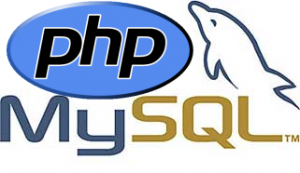by admin | Feb 13, 2010 | Random Postings

Written by: Gerald Bauer, Owner of JB Systems
I’d like to spend a moment and bring to attention some interesting points about the technology and more importantly, the programming language, that powers our applications and websites coming from JB Systems.
The battle of web-languages has been fought for years, and several languages still exist today. At our beginning, an important decision had to be made. We knew at the get-go our websites needed interaction – something that set them apart from “table-based”, static websites that were at the time very common. Our choices for a language included Java Server Pages (JSP), Active Server Pages (ASP), Coldfusion (a Macromedia/Adobe language) and Hypertext Pre-Processor (PHP). The acronyms are a bit much – but stick with me.
Why We Went With PHP…
Well, to summarize briefly and to provide you with some valid points – here’s our case for PHP:
- PHP is an actual programming language. For developers comfortable using languages like Javascript, Python, Java, etc – picking up PHP is typically quite easy.What does this mean for you? Easy – more programmers can be readily found to develop PHP. Your PHP-driven website has a better chance of being supported by other developers (if need be) – especially over languages such as Coldfusion and JSP, as these languages are typically more specialized. Laymen Terms: Cheaper to support
- PHP is Efficient. The C library that runs PHP requires far less overhead than running TomCat (JSP engine built by Java) or the Coldfusion Engine (Build by Adobe). ASP runs by default on Microsoft’s IIS server (however, do we really want to discuss the viability or security if IIS?).
What does this mean for you? Speedier websites and delivery of pages. Since our server doesn’t have all of this bulky 3rd party software consuming processor usage and memory – they can deliver pages faster and more efficiently than others.
Laymen Terms: It’s more efficient, our servers can run faster than others.
- PHP is more popular? I know that’s a bold statement – but don’t believe me?
I encourage you to review TIOBE Programming Community Index. You’ll find PHP is the 3rd most commonly used programming language worldwide. Languages such as Coldfusion, ASP, Ajax, Ruby on Rails and more were excluded – because, according to the website, they’re not considered full blown languages. This may come as a shock to all of the Microsoft proponents of the world – especially my colleagues at CVTC – but sorry. (Is this where I get to point out Apache web servers outnumber Microsoft ones by over 4-1! No really… See Here.
In case you’d like more supporting documentation, the following site (HERE) displays statistics on the top used frameworks. Here’s the scoop:
PHP – 29.58%
ASP – 23.98% (Sorry guys)
J2EE (JSP) – 7.66%
Coldfusion – 1.92% (eek)
Laymen Terms: Go with what’s supported the most, especially with technology that changes as often with the web. Again, cheaper to support.
- Cost To Developer. PHP is Free. Did you know a Coldfusion license can cost as much as $7,500? Ouch. And what about their upgrades – from year-to-year? PHP, ASP, and JSP are continuously supported and upgraded for free. Throw in the industry-standard MySQL database that powers our “back-end” data storage needs and we can write applications that other developers would need to spend $10,000 on just to get started.
Laymen Terms: We don’t have to charge you as much.
Well, that concludes my summary of why JB Systems (and ~ 30% of other developers in the world) choose PHP as the de-facto technology of choice to power our websites. Hopefully you’ve found this article helpful. Thanks for reading!
by admin | Feb 11, 2010 | Random Postings, Search Engine Optimization
Written by: Erin Trowbridge, Director of Marketing at JB Systems, LLC
Recently, the Chippewa Valley Business Report wrote about something near and dear to our hearts: the online marketing world. I wanted to take just a minute to focus on a couple of ideas they mentioned, and explain why they’re important. And of course, we can help you out with any of this on your site.
Landing Pages and Microsites
Landing pages allow you to easily track where your website traffic is coming from so that you know what marketing efforts are working…and which are not. Think of your marketing activities – whether it’s advertising, trade shows, direct mail, or another offline channel. How do you know if they were effective? Landing pages are specifically targeted to exactly what the ad or direct mail piece is talking about so that the customer isn’t at all confused. This makes it more likely that they will keep clicking through and eventually buy or contact you.
Microsites are exactly what they sound like – small sites within or added to your site that are specifically targeted to one product, program, service, etc. This is what Net Health Shops does for their various product lines. They allow you to provide a few pages of ultra-specific content to your customers who you don’t want distracted by other things on your website.
“No unsupervised thinking” - MarketingExperiments.com
Both landing pages and microsites are extremely effective for getting the customers to do what you want them to do on your website. Studies have shown that by being blatantly obvious about what you want customers to do and how to do it will increase your conversion rates in a huge way. And isn’t that what we all want – for our website visitors to convert into qualified leads, subscribers, customers, or donors?
Search Engine Optimization, Organic Search, and Paid Search
Although this may just sound like a collection of buzz words and trendy online jibberish, these are things that your company really should be considering in your marketing plans for 2010. If built and marketed the right way, your website can actually generate revenue or leads that turn into revenue, instead of just being another expense.
Search engine optimization (SEO) is a process by which you make small, but significant changes to the content of your website (seen and unseen by visitors) in order to be listed higher on the search results page of Google, Yahoo, Bing, or other search engines. Why, you might ask, do I need to be ranked high in search engines?
Reason #1: Location, Location, Location. If no one could find your business, how long do you think you’d last? Same goes for your website.
Reason #2: We are spoiled. Well, maybe not spoiled, but busy – and because of that, we expect that everything should be right there, right now. We expect that the best results will be at the top. Would you go to page two or three when you can get the best on page one?
Reason #3: We don’t listen. It’s not that we don’t listen to things that we care about, but your advertising is not one of those things. We’ve been bombarded by advertising most of our lives and it has gotten to a point where most people just tune it out. Although using a variety of advertising channels is a good move for most companies, they won’t always remember your web address in that ad. If the ad was effective, they will, however, remember the ad’s message and maybe your company name or what kind of product/service was being advertised. That’s what they’ll put into the search engine. If you’re near the top and they heard/saw your ad, it’s pretty likely that they’ll click through to your site.
We have implemented our SEO+ program for several of our clients and they’ve seen some great results. Google uses about 100 different variables to determine your placement, so it’s not something that happens overnight and it’s not something that most small business owners have time for. SEO is an ongoing process; our program is 12 months and we meet with you every other month to talk about your rankings. We also review your analytics with you so that you really understand what’s happening on your site.
“Ok…I get the organic search stuff, but what about paid search?”
Paid search (also called CPC, PPC or pay-per-click advertising) means that you’re actually buying advertising on the search results page. Those ads are triggered by whatever keyword is typed in. You bid on keywords that are relevant to whatever you’re advertising, and the best placement goes to the highest bidder. When someone clicks on your ad, you get charged whatever your bid was to be to win that placement. The more relevant the target page is to the keyword typed in, the better placement your ad will have. I will caution you though: paid search is not for the faint of heart. It requires a lot of monitoring, bid modifications, and budget control. This is easily done by using the ‘daily budget’ function, but if that’s not used, you can rack up a hefty bill in no time.
There’s a lot more in-depth I could go, but for the sake of your precious time…here’s a link to tell you a little more about how our Search Engine Marketing program works.
Let us know if you have comments or questions about this kind of stuff. We’ve made these kinds of things work really well for several of our clients already and we’d love to share those successes with you. Comment on this post or send me an email!
by admin | Feb 6, 2010 | The JB Labs, Website Launches
 Written by Gerald Bauer, Owner of JB Systems, LLC
Written by Gerald Bauer, Owner of JB Systems, LLC
Impact Sports, a division of Genesco (the parent company of Hat World, Lids.com, Journeys, and Dockers Footwear), chose JB Systems to implement their proprietary Artwork Management System. After upgrading their company’s internal business management and invoicing software, Impact still had a need for their art department to manage their artwork files. Sounds like a pretty straightforward task, except the anticipated number of files to store was going to range between 60,000 and 100,000 pieces – all needing to be tagged, categorized, and more. To make matters even more interesting, the “Art Manager” (as it’s been code-named), needed to integrate with the databases (MSSQL) of their new management software.
Needs Of This Solution Included:
- Ability to store, categories, and search for all pieces of customer artwork
- Create a 4-step approval process for internal controls before artwork reaches the customer for approval
- Create an interface, online, for customers to approve or decline their pieces of artwork
- Provide documentation and re-approval if artwork is declined
- Store approvals in their internal business management software for company to use
- Create the application to be scalable – and expandable based upon future needs of the company
- Much more…
JB Systems (or the Labs) implemented a proprietary solution that accomplished all tasks – and housed in a secure server environment. The new application has streamlined their artwork approval process with clients, enhanced the quality control of their artwork, provided back-end integration with their management software, and more. We’re proud of the system we’ve created and excited to work with Nike’s largest North American distributor. This is a testament to the quality of programming and project management that the JB Labs (at JB Systems) can provide – from small companies to multi-million dollar ones.
More next time – and thanks for reading!
by admin | Jan 25, 2010 | Random Postings
 Cloud computing is a term that has gained much popularity in the past year or two, and is now the driving force behind several web development and IT-based companies. Interestingly enough, we thought it would worthwhile to note that JB Systems started with this technology from our humble beginning.
Cloud computing is a term that has gained much popularity in the past year or two, and is now the driving force behind several web development and IT-based companies. Interestingly enough, we thought it would worthwhile to note that JB Systems started with this technology from our humble beginning.
In 2003, we leased our first dedicated server and began hosting our websites on a server we couldn’t physically touch. Our competitors laughed at this, scoffing at us because our servers “weren’t local” and that we couldn’t maintain our machines efficiently.
Well, the year is 2010 and most, if not all, of our competitors have moved their hosting platforms to data centers, hence using this notion of cloud computing. The irony here is what we find funny.
Trend setters… perhaps we are. More next time.
by admin | Jan 18, 2010 | Random Postings
 Written by Erin Trowbridge, Director of Marketing at JB Systems
Written by Erin Trowbridge, Director of Marketing at JB Systems
After a long wait, I’ve finally arrived at my cozy desk at JB Systems with iMac in place and ready to rock!!
For those of you who aren’t familiar, I’m the newest addition to JB Systems. Basically, this means that JB Systems’ clients can access my marketing, graphic design, and writing skills whenever, wherever…ok, almost. But the point is – I’m here as a resource for our clients so I hope that you’ll take advantage of that. My goal is to make sure that our clients’ websites do exactly what they want them to do – that includes using the coolest, newest technologies and creative marketing ideas, but also making sure that your online (and even offline) marketing is measurable, targeted, and relevant to your customers.
I would also like to say that I couldn’t be more psyched to be working with Jerry, Meghan, and the whole crew at JB Systems – talk about a powerhouse of talent! You’ll never hear “no, we can’t do that” and I think that’s a true testament to their dedication to their clients and their expertise in their fields.
Now that I’m here, feel free to contact me anytime…about marketing, how to get the best results from your website, or if you just need a break! You can reach me at erin@jbsystemsllc.com or 715-830-9375.
Hilsen, (yes, I speak a little Norwegian)
~Erin
by admin | Dec 30, 2009 | Random Postings, Website Launches

JB Systems’ newest e-commerce site COUNTRYSIDE LEFSE has had a tremendous first season, accumulating gross sales in access of 3 times its cost within 60 days.
Being a relatively straightforward e-commerce site, the developers at JB Systems provided a cost-effective solution catering to one goal: Create the most easy-to-use Lefse-ordering website online. Period.
Using technologies such as security certificates from Comodo, our newest billing and shipping technologies, as well as UPS integration for quick & easy label printing – JB Systems went to work. After 60 days of being live, and having paid for itself in that time period – we’re proud to say mission accomplished.
To see this site in action, visit http://www.lefse.com





